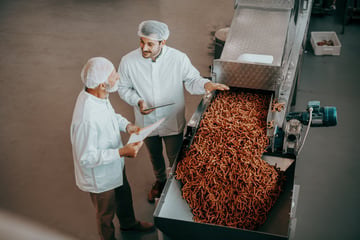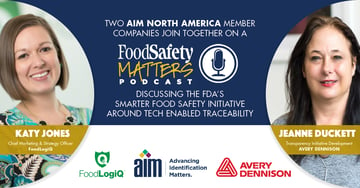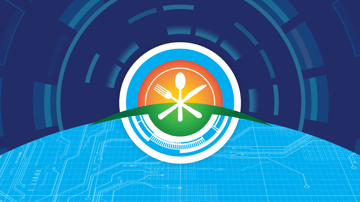What we learned from the FDA’s public meeting on tech-enabled traceability and outbreak response, smarter tools, new business models and food safety culture.
The FDA held a public meeting yesterday kicking off their new campaign on A New Era of Smarter Food Safety. The all-day event was a referendum on the status of food safety across the industry, as well as a step towards consensus building on how to reimagine food safety at scale.
The Acceleration of Change
Frank Yiannas, the Deputy Commissioner for Food Policy and Response, opened the event with an exciting pulse check on what he described as a “food revolution.” According to Yiannas, the next 10 years are poised to affect more change on the supply chain than we’ve seen in the last 40 years. There are four key factors accelerating change today:
- Increased leadership scrutiny in the face of major food quality incidents
- Competitive cost pressures of ethical branding
- Speed to market and the ROI of supply chain efficiency
- Accessibility and maturity of technology
While innovations in supply chain technology enable food transparency, and recent legislation like the Food Safety Modernization Act (FSMA) help provide a traceability roadmap, the movement is fundamentally driven by people. Shifting consumer consciousness is bringing a critical eye to the food and beverage industry, as well as a desire to invest in sustainable, safe, and healthy products. A renewed connectivity to food is aligning the public with supply chain transparency, an initiative that regulators now view as critical.
The confluence of evolving consumer demands and deeper industry insights has placed new standards for food data as a “top priority” for the FDA, according to FDA Acting Commissioner Ned Sharpless.
Diagnosing and Improving the Supply Chain
The FDA has implemented focus groups targeting four strategic beacons of smarter food safety in the hopes of ushering in this new era:
- Technology-enabled traceability and outbreak response
- Smarter tools and approaches for prevention
- New business models and retail modernization
- Food safety culture
Changes in food businesses, supply chain technology, and culture are happening in parallel, making broader initiatives around smarter food safety and coalition-building imperative. Many of the speakers underscored the human element of enacting change. New tools and methods are only as effective as the people implementing them—training and communication are often where the rubber hits the road with food safety. However, identifying human error and high-risk portions of the supply chain requires clear insight into food quality events and the end-to-end journey of product ingredients.
The Role of Food Data
Steve Mandernach, Executive Director at the Association of Food and Drug Officials, explained how issues should be addressed at the intersection of food event data and organizational management. With 60% of food-borne illness outbreaks tied to restaurants, there are lessons to be learned about flagging food safety incidents using increased communication and digitized transactions. Companies are able to learn where they are falling short and where to implement new processes with more food event data.
Ned Sharpless also underscored the power of tracking food events in the age of big data. With open source machine learning algorithms yielding better models, and the dramatic increase in computing capacity, the mass collection of data has never been more valuable. Tech-savvy food companies with significant data can see real value added in a matter of weeks. Sharpless, who was previously the Director of the National Cancer Institute, drew parallels with cancer research both in terms of the importance of food safety optimization, as well as the implementation of next-gen AI techniques. Companies taking on traceability and comprehensive data collection will now have a competitive advantage and can have a greater impact on mitigating risks. “Be bold,” Sharpless implored, “start doing it and doing it now.”
Facilitating the Future of Food Safety
Trustwell's VP of Supply Chain Strategy & Insights Julie McGill provided public comments, joining a chorus of expert voices highlighting the importance and attainability of food traceability. Central to her message: a new era of smarter food safety has already begun.
McGill told the audience, “End-to-end traceability is being realized today. Our customers are gathering Key Data Elements, sharing Critical Tracking Events, and connecting their supply chains end-to-end, leveraging this data. We have over 23 million Critical Tracking Events in our system today, and those numbers continue to grow.”
Julie McGill will be continuing the conversation on traceability and the new era of smarter food safety in our upcoming webinar, Getting Started in the Current Age of Traceability, on October 29th.
Other posts you might be interested in
View All Posts
Food Industry
7 min read
| April 7, 2023
The Essential Components of a Successful Food Traceability System
Read More
Traceability
3 min read
| January 16, 2020
Food Safety Matters: Partnering on Food Traceability and Transparency
Read More
Food Safety
7 min read
| October 27, 2020

